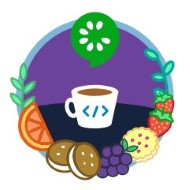Cucumber with Java
Learn Python for software testing with hands-on experiences and multiple learning modalities. Master coding constructs, object-oriented programming, data structures, and test automation. Gain the ability to read, understand, and review Python code, write unit tests, and scripts for various testing types. Join our course at teachcode.org, founded by a Python and software testing expert. Start your journey towards becoming a skilled tester with Python and Selenium UI tests, security scans, and accessibility scans. Get ready to excel in the world of software testing. Enroll now and unlock your potential!
Now let’s get straight to the course overview.
This course is designed for people who are new to Cucumber and are eager to implement the Cucumber fashion test automation for their application.
As always, first we will get some basic knowledge on the behavior driven development concept.
Then we will learn about the Three Amigos process which is one of the main activities performed during the Sprints.
Following that, we will start learning about Cucumber, which I’m personally using for years now.
We will get to know what Cucumber is, and a specialized language called Gherkin, which will help us to achieve effective requirements mapping, along with examples.
We will also be learning about what a Feature File is and the structure in which it has to be written.
Also, we are going to see Scenarios, Scenario Outlines, and then we will get into Step Definitions. We will also be learning about Cucumber Hooks.
Gherkin Scenarios play an important role in understanding the requirements between the developers, testers and business analysts and hence, it is very important for us to know how to write the Gherkin Scenario.
We will learn about some good practices to write the Gherkins that are highly effective.
Now, the most exciting part — Cucumber with Selenium.
Yes, we will learn how we can automate a demo banking application with various features in it.
We will learn how to write a Gherkin scenario for a Feature and make it reusable. When I say reusable, I mean that we will start learning how we can use the concepts of Scenario Outline, Data Tables, and Data Lists.
Following that, we will start focusing on the advanced level concepts like sharing states and dependency injection.
We will also be looking at how to execute the Scenarios in parallel so that we can save a lot of time and effort.
Lastly, we will see the reporting. Pretty reporting is a common kind of reporting and we will see how to generate and analyze it.
Next, the tools part.
If you are new to Java or Selenium, I would highly recommend you go through the courses, Selenium WebDriver with Java and Java Programming by Angie Jones in Test Automation University.
Throughout the scores, we will be using Eclipse IDE as the editor.
We will use Cucumber JVM 5.0.0 RC 2 version, Selenium WebDriver version 3.141.59 , and JUnit as our testing framework.
So, with these topics, I hope you will enjoy this course.
Now without any ado, let’s get started.
Git Repo for Course Code
Cucumber Website
TAU Course: Selenium WebDriver with Java
TAU Course: Java Programming
TAU Course: Cucumber with JavaScript








There are no reviews yet.